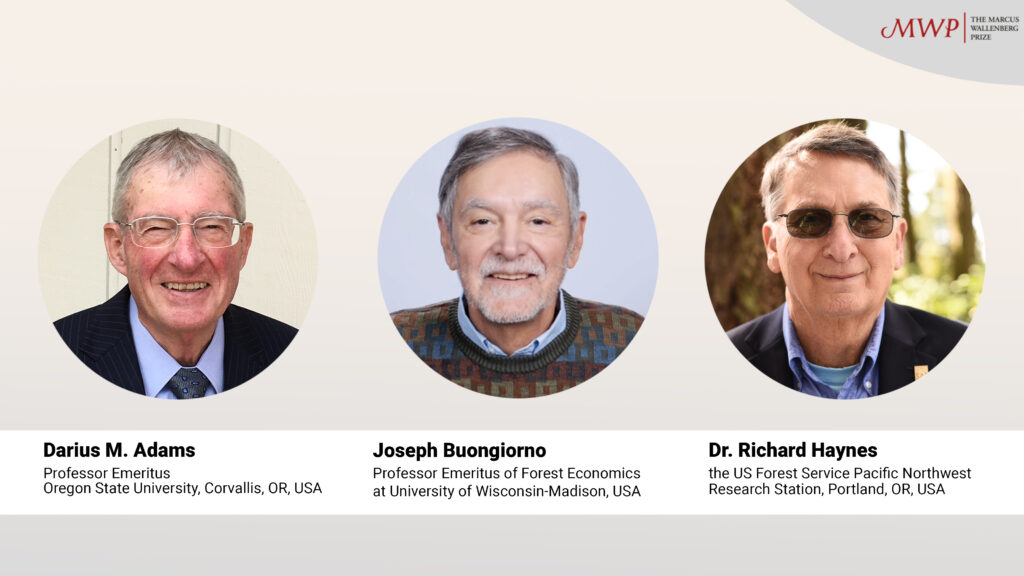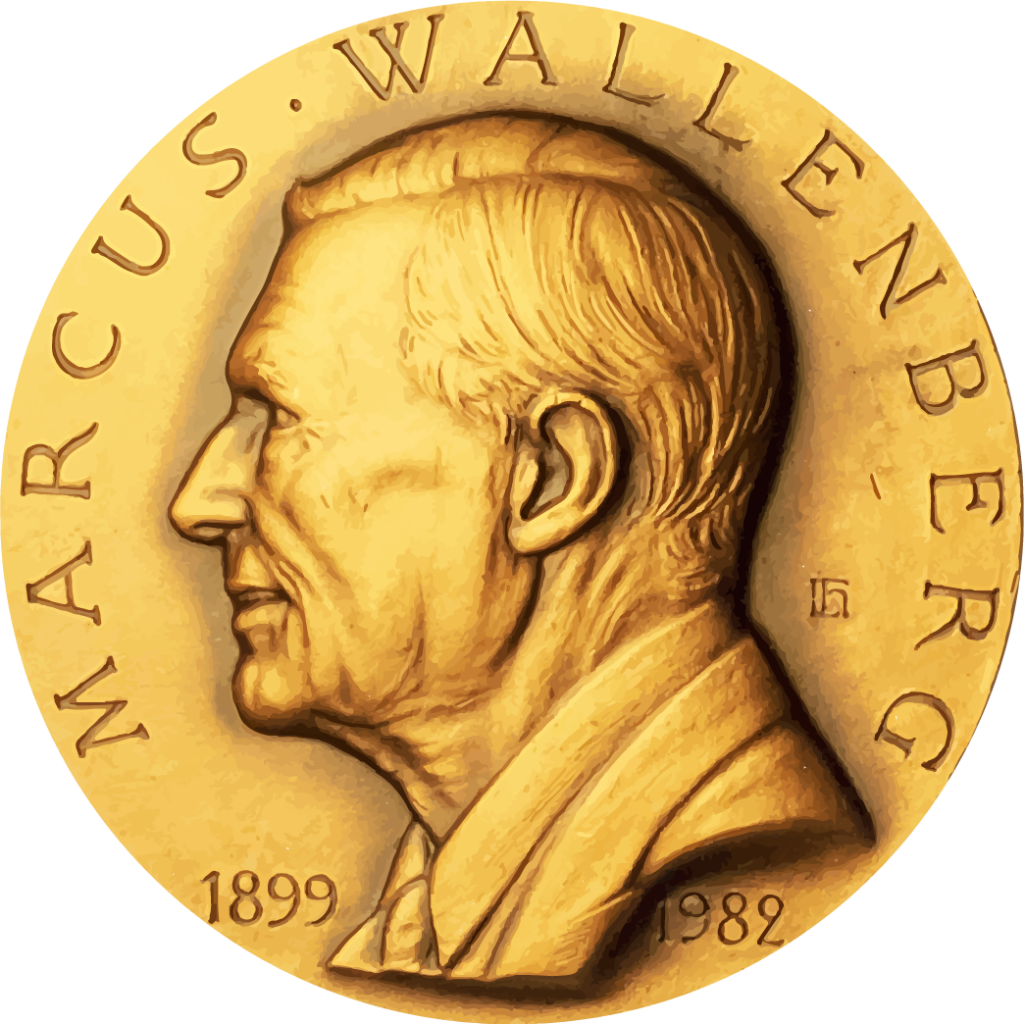The 2023 Marcus Wallenberg Prize is awarded to Drs Darius M. Adams, Joseph Buongiorno and Richard Haynes for their development of the original and groundbreaking forest economic models TAMM and PAPYRUS and its extension to the global forest products model GFPM.
The need to analyze the impact of policies and other factors that influence forestry and the forest industries on a global, national, and regional level is increasing. Climate change put pressures on forest as carbon sinks, and population and income growth imply rising pressures on the demand of forest raw materials all over the world.
The TAMM and PAPYRUS economic models demonstrate a groundbreaking way to combine biological, statistical, mathematical, and technological knowledge with neoclassical economic theory into empirical models that are highly useful for forestry, forest industries and policy makers. These models can be applied to analyze the impact of multiple factors such as trade regulations, climate mitigation measures, carbon pricing, forest protection measures, subsidies applied to energy supply, new biorefinery products and climate change. Especially now in rapidly changing times, these models and their successors become increasingly valid and needed.
Work on the models commenced in the 1970’s, when major changes took place in the forest industry as a result of globalization and increased demand. This led to environmental concerns and challenges related to international trade regulations in the forest sector. Appropriate tools to analyze the effects of such concerns became an urgent requirement to manage the future development within the sector, and it was in this setting that TAMM and PAPYRUS were developed.
The foundation of TAMM (Timber Assessment Market Model) was laid in the 1970’s, a product of the joint efforts by Darius m. Adams and Richard Haynes. Adams had developed a model that included detailed timber supply routines for various types of landowners, a rough trade model for the USA-Japan lumber trade, and full coverage of the US forest products industries. However, prices were set outside the model, and inter-regional trade within the US was not included.
Around the same time, Haynes developed a spatial model of timber supply that outlined how much timber is available in different parts of the US, taking into account that demand and subsequently the price can vary depending on region. The model utilized a heuristic algorithm to figure out trade and prices at the same time. After this, Adams and Haynes co-developed TAMM, the first multi-market spatial equilibrium forest sector model.
TAMM covered only the US solid wood market, and Buongiorno’s important early contribution to forest sector modelling was the development, with his graduate students, of the model PAPYRUS, which is a multi-market spatial equilibrium sector model of the North American pulp and paper industries. It had several structural similarities with TAMM but included two major improvements: it used activity analysis to characterize production technologies and applied ordinary stepwise linear programming.
The groundbreaking work of both TAMM and PAPYRUS became the foundation for the future of forest sector modelling based on neoclassical economic theory, and has laid the basis for numerous global, national, and regional models of this kind, including the widely used Global Forest Products Model GFPM.
“European forests are currently affected by several regulative actions such as Nature Restoration Regulation and Biodiversity regulation from the EU. Understanding the economic impacts of these regulations is of utmost importance for the forest sector and national decision makers. The models created from the groundbreaking research of the prize winners has enabled development of European tools to address these questions,” says Professor Gert-Jan Nabuurs, Member of the Marcus Wallenberg Prize Selection Committee.
“Global forests and the industry continue to face new demands and challenges under a changing climate and new governance conditions. The further development of forest and forest sector modelling and continuing on the legacy of this year’s laureates will become increasingly important to guide policy making at different levels and to sustain an intelligent and sustainable development of forestry and forest industries,” says Professor Johanna Buchert, Chairperson of the Marcus Wallenberg Prize Selection Committee.
The Marcus Wallenberg Prize 2023 will be presented by HM the King of Sweden at a ceremony in Stockholm in November this year.
Key facts about the laureates
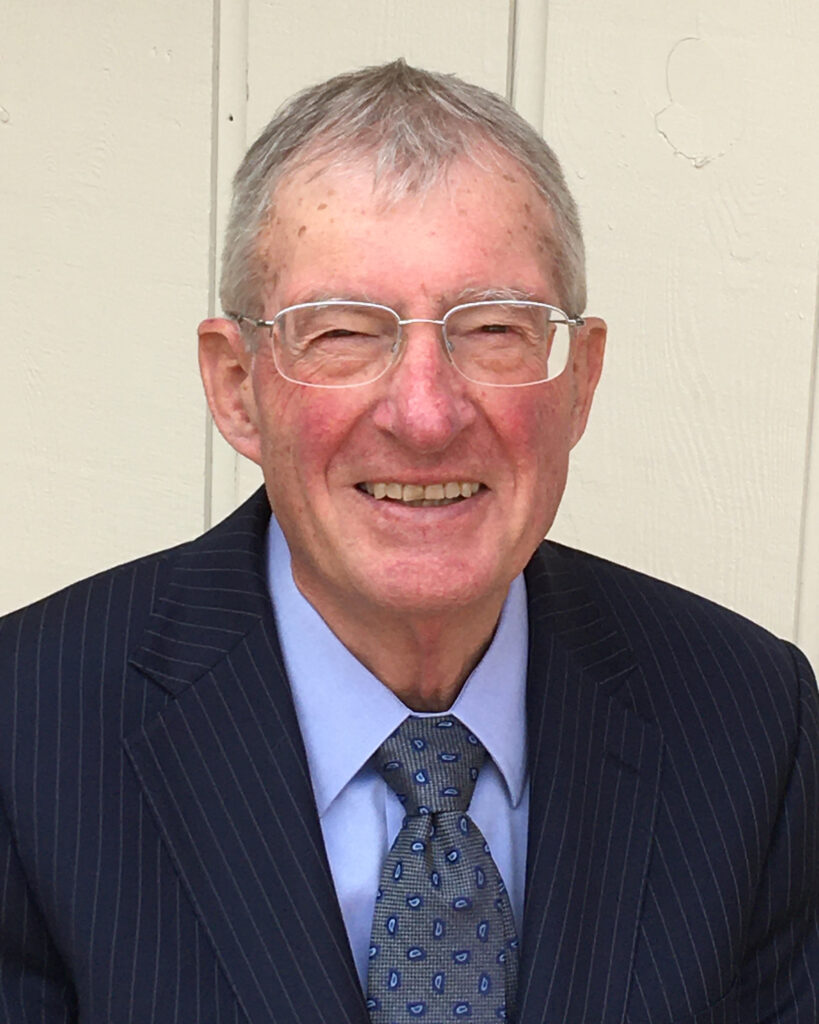
Darius M. Adams, Professor Emeritus at Oregon State University, Corvallis, OR, USA. He earned his Ph.D. in Wildland Resource Science at the University of California, Berkeley in 1972.
Examples of his research areas are: Econometric studies of timber supply and demand; optimization of forest management in even-aged and uneven-aged forest stands; forest sector market responses of law regulations; perceptions of the US forest sector and implications for the RPA Timber Assessment; spatial modelling of African-European trade in tropical logs and sawn wood; economic impact of preserving old growth forest on public lands in the US Pacific Northwest; social costs and market impacts of sequestering carbon on forest and agricultural land; developing the forest part of FASOM – an intertemporal model of the U.S. Forest and Agriculture Sectors; impacts of global climate change on the U.S. forest and agriculture sectors; stochastic frontier analysis of technical progress, efficiency change and productivity growth in the sawmill industry; effects of mandatory versus voluntary participation in private forest carbon offset markets in the US.
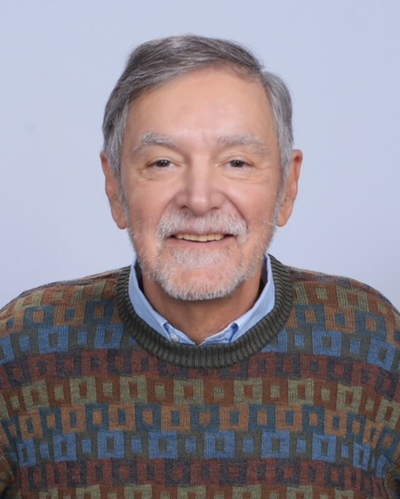
Joseph Buongiorno, Professor Emeritus of Forest Economics at University of Wisconsin-Madison, USA. Buongiorno earned his Ph.D. in Wildland Resource Science in 1972 at the University of California, Berkeley.
Examples of his research areas are: Econometric studies of timber supply and demand of forest products; assessing non-timber values of forests; development and applications of the global forest sector model GFPM; tropical rain forest management; effects of ban on tropical log exports; comparative advantages in trade of forest products; trade impacts of exchange rate changes; optimal hedging in lumber future markets; evaluation of risk/uncertainty in forest sector modelling; formalizing and applying Markov chain models for analyzing optimal forest management regimes under multiple sources of risk; carbon sequestration in forests and forest products; accuracy of official international statistics regarding forest harvest and forest industry productions.
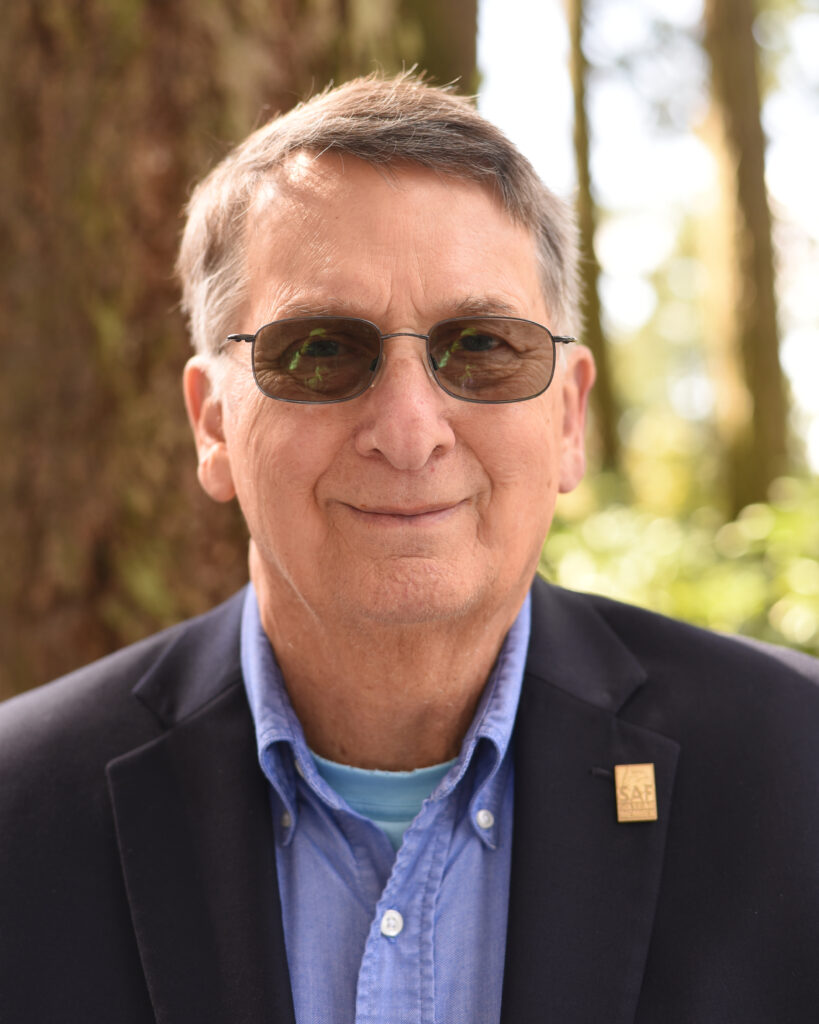
Dr. Richard W. Haynes, the US Forest Service Pacific Northwest Research Station, Portland, OR, USA. He received his Ph.D. in Forest Management in 1975, at the North Carolina State University, Raleigh, North Carolina, USA.
Haynes specialized in assessing forest resources and markets and played a central role in important events leading up to and through formulation of the Northwest Forest Plan (NWFP) and other regional conservation strategies. Examples of his research areas are: Econometric studies of timber supply and demand; welfare analysis of long-term forest products price stabilization in the US; impact of private investment in forest management on the US long-term supply of timber; uncertainty, risk, and ecosystem management; perceptions of the US forest sector and implications for the RPA Timber Assessment; economic impact of preserving old growth forest on public lands in the Pacific Northwest; effects of waste paper recycling on the forest sector; methodological considerations in developing timber assessment projection systems; utility of forest sector models in addressing forest policy questions.
Official Press Release in two language versions, and the Full Prize motivation:
MWP 2023 Press release Announcement ENGLISH
MWP 2023 Pressmeddelande Tillkännagivande SWEDISH
MWP 2023 Award – Full motivation
Photo for downloading
